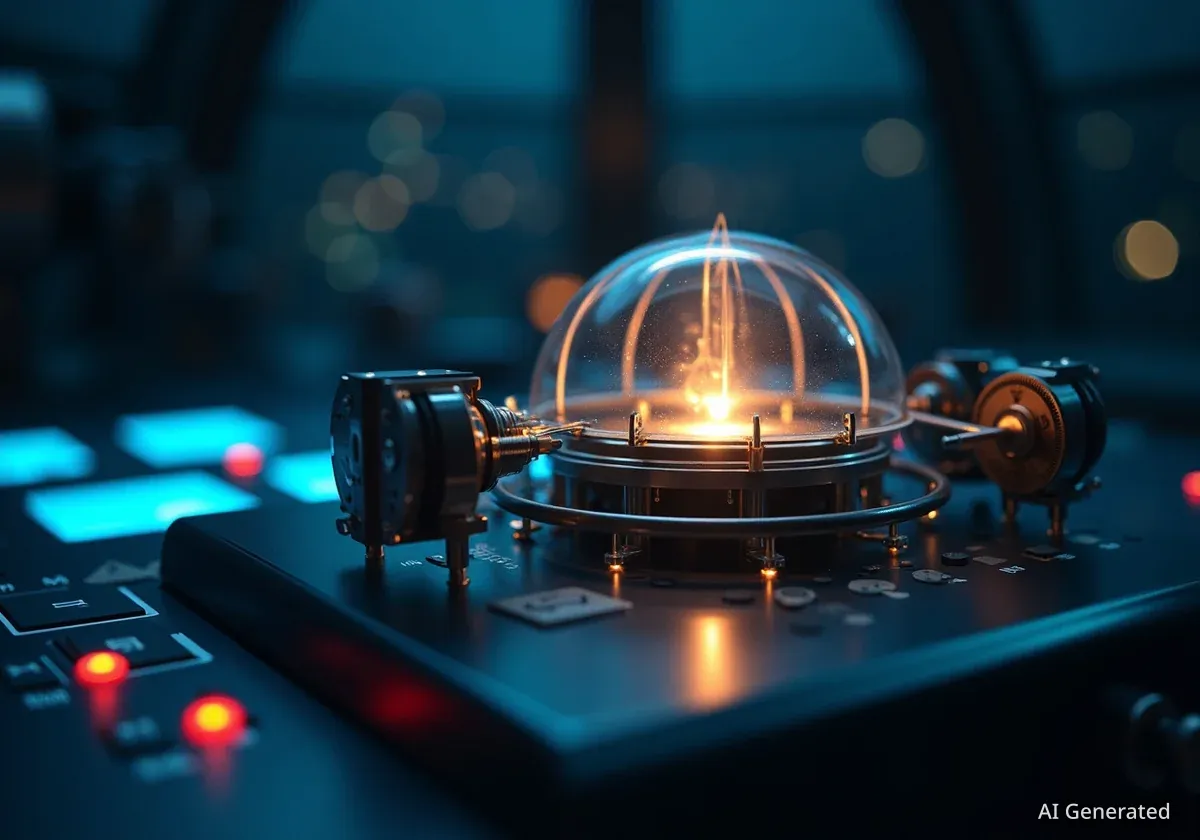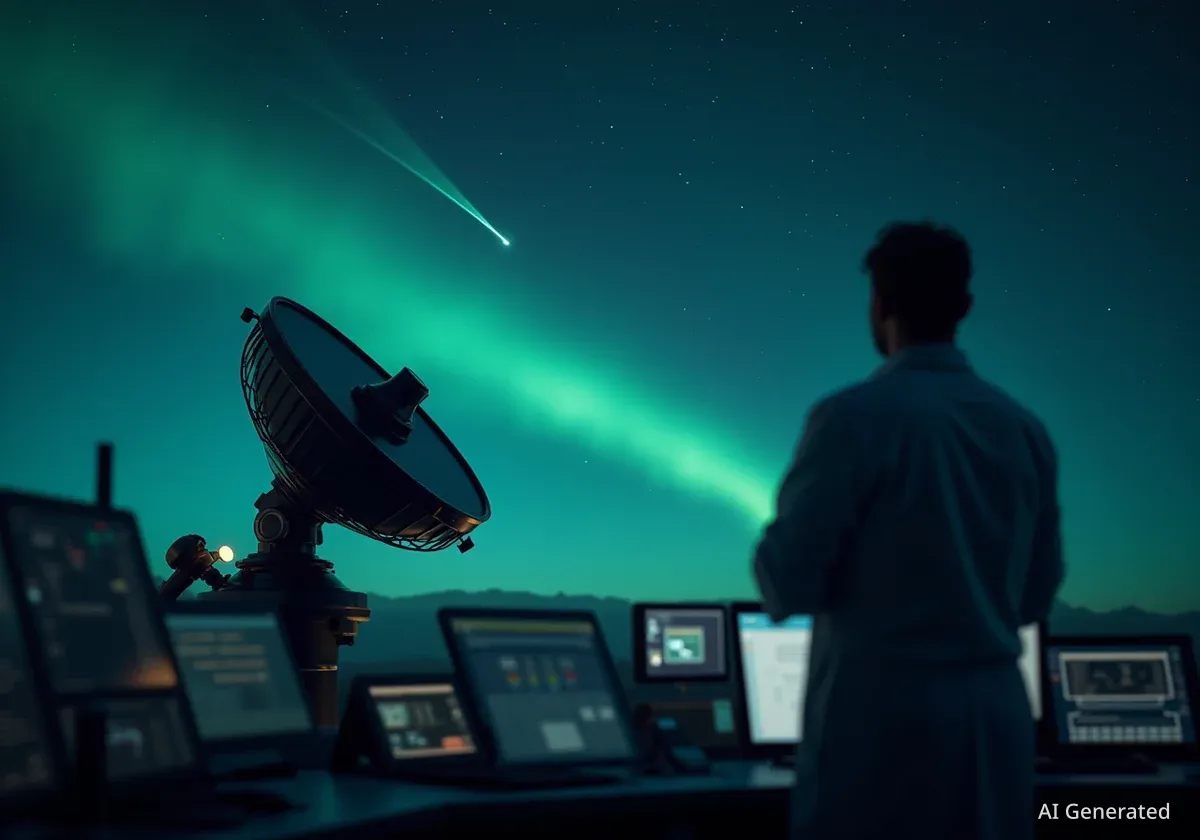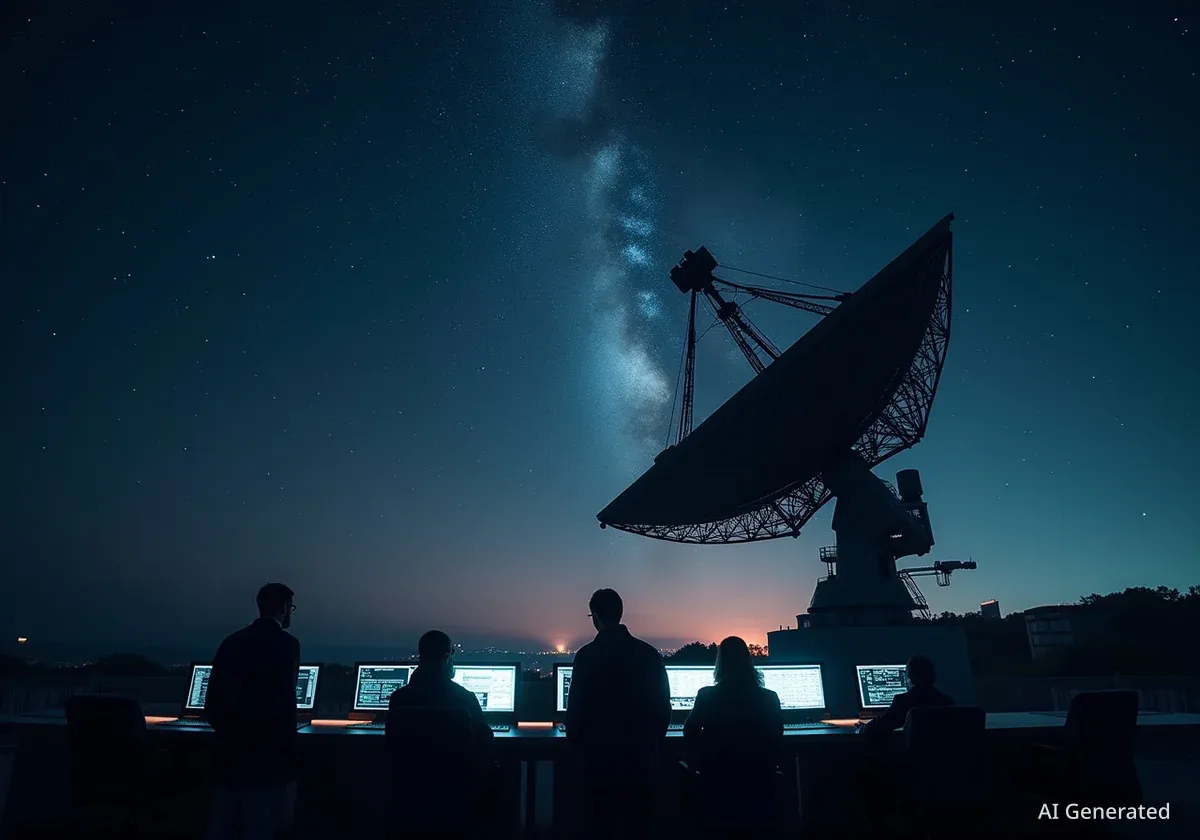A newly installed instrument on the Subaru Telescope in Hawaiʻi is providing astronomers with an unprecedentedly clear view of the cosmos. Developed through an international collaboration, this technology has already revealed a never-before-seen feature of a nearby star, demonstrating its power to reshape our understanding of space.
The device, known as a photonic lantern, was installed on the telescope atop Maunakea and is part of a larger system called FIRST-PL. This achievement is the result of a partnership between the University of Hawaiʻi, the Paris Observatory, UCLA, the University of Sydney, and the Subaru Telescope team.
Key Takeaways
- A new instrument called a “photonic lantern” is now operational on the Subaru Telescope on Maunakea.
- The technology allows for the creation of ultra-clear images by separating starlight into multiple channels.
- In its first major test, the instrument revealed a lopsided gas disk around the star beta Canis Minoris, a detail previously unobservable.
- This project is a significant achievement for the University of Hawaiʻi's new Space Science and Engineering Initiative.
A Sharper View of the Universe
Astronomers have long sought ways to overcome the distortions caused by Earth's atmosphere, which can blur images of distant celestial objects. The new photonic lantern addresses this challenge by using advanced optical techniques to process starlight with remarkable precision.
The instrument works by taking the light collected by the telescope and splitting it into numerous individual signals. Think of it like a prism separating white light into a rainbow, but far more complex. This process preserves subtle details in the light patterns that are typically lost.
"This device splits the starlight according to its patterns of fluctuation, keeping subtle details that are otherwise lost," explained Yoo Jung Kim, a graduate student at UCLA and the lead author of the study detailing the findings. By capturing these fluctuations, scientists can computationally remove atmospheric blurring and reconstruct an image of stunning clarity.
"By reassembling the measurements of the outputs, we could reconstruct a very high-resolution image of a disk around a nearby star," Kim added.
First Light Reveals a Lopsided Star
The team directed the new system, which is part of the Subaru Coronagraphic Extreme Adaptive Optics (SCExAO) platform, toward a nearby star named beta Canis Minoris. The results exceeded expectations. The instrument revealed that the star is surrounded by a rapidly spinning disk of gas that is unexpectedly asymmetrical, or lopsided.
This discovery, published in The Astrophysical Journal Letters, provides new insights into the dynamics of stellar systems. Observing such a feature was impossible with previous technologies, highlighting the transformative potential of the photonic lantern for astronomical research.
What is a Photonic Lantern?
A photonic lantern is a device made from optical fibers that transitions light from a single, large input (like a telescope's view) into many smaller, individual outputs. This allows for more granular analysis of the light, which is crucial for advanced imaging techniques like adaptive optics, helping to correct for atmospheric distortion.
A Milestone for Hawaiian Engineering
The success of this instrument marks a significant achievement for the University of Hawaiʻi's Space Science and Engineering Initiative. This new program, which began its first engineering courses at UH Hilo in the fall of 2024, aims to establish Hawaiʻi as a leading center for space technology development and education.
Sébastien Vievard, a faculty member from the joint UH Mānoa College of Engineering and Institute for Astronomy program, was a key figure in the project. He emphasized the collaborative nature of the achievement.
"What excites me most is that this instrument blends cutting-edge photonics with the precision engineering done here in Hawaiʻi," Vievard stated. "It shows how collaboration across the world, and across disciplines, can literally change the way we see the cosmos."
The Subaru Telescope
Located on the summit of Maunakea in Hawaiʻi, the Subaru Telescope is an 8.2-meter optical-infrared telescope operated by the National Astronomical Observatory of Japan. Its high-altitude location and advanced instrumentation make it one of the world's premier facilities for astronomical observation.
The Future of Astronomical Observation
The implementation of the FIRST-PL instrument is more than just a single technological upgrade; it represents a new frontier in how astronomers study stars, planets, and the disks of gas and dust that form them. By providing clearer images, the technology will enable scientists to:
- Detect exoplanets: Sharper images make it easier to spot faint planets orbiting bright stars.
- Study stellar formation: Detailed views of protoplanetary disks can reveal how planetary systems are born.
- Analyze stellar atmospheres: The instrument can help scientists understand the composition and dynamics of stars themselves.
This project not only advances the field of astronomy but also strengthens Hawaiʻi's role as a global hub for scientific innovation. By combining hands-on engineering experience with academic learning, the UH initiative is training the next generation of scientists and engineers who will continue to push the boundaries of human knowledge.





